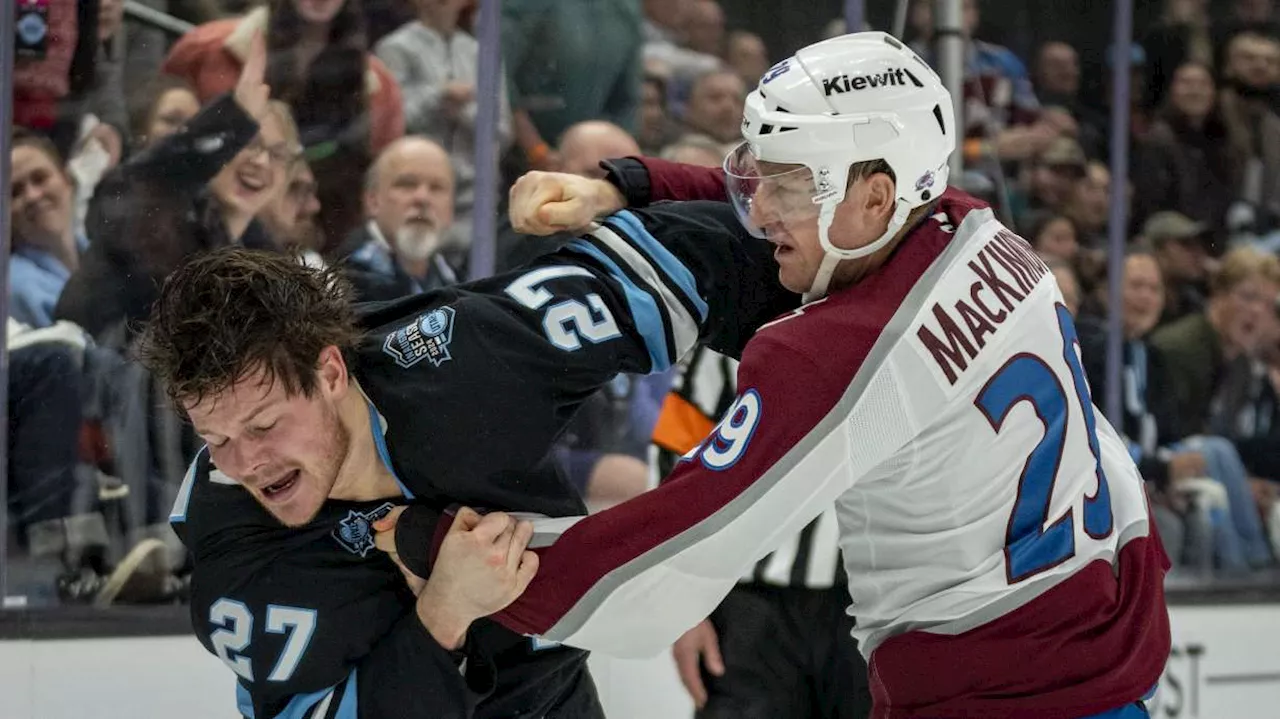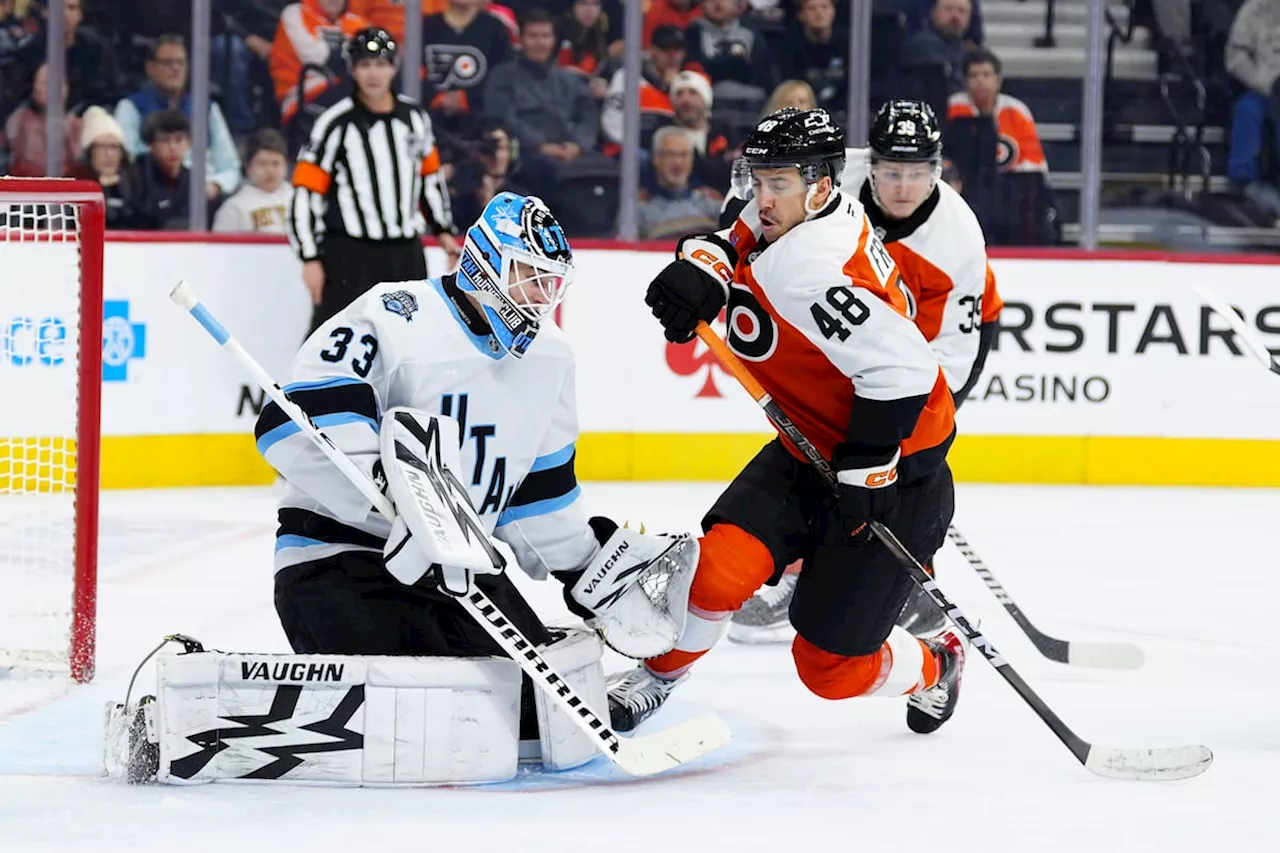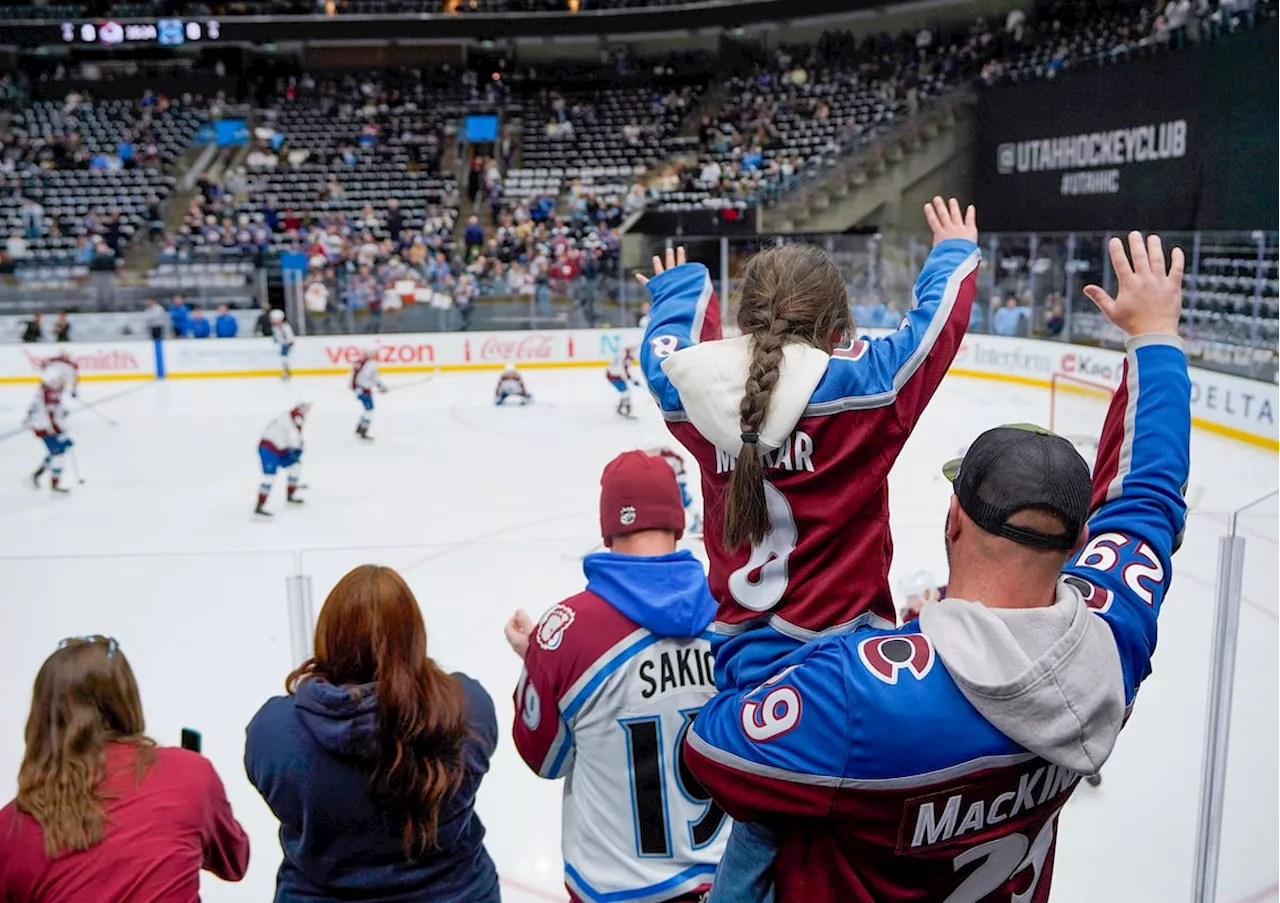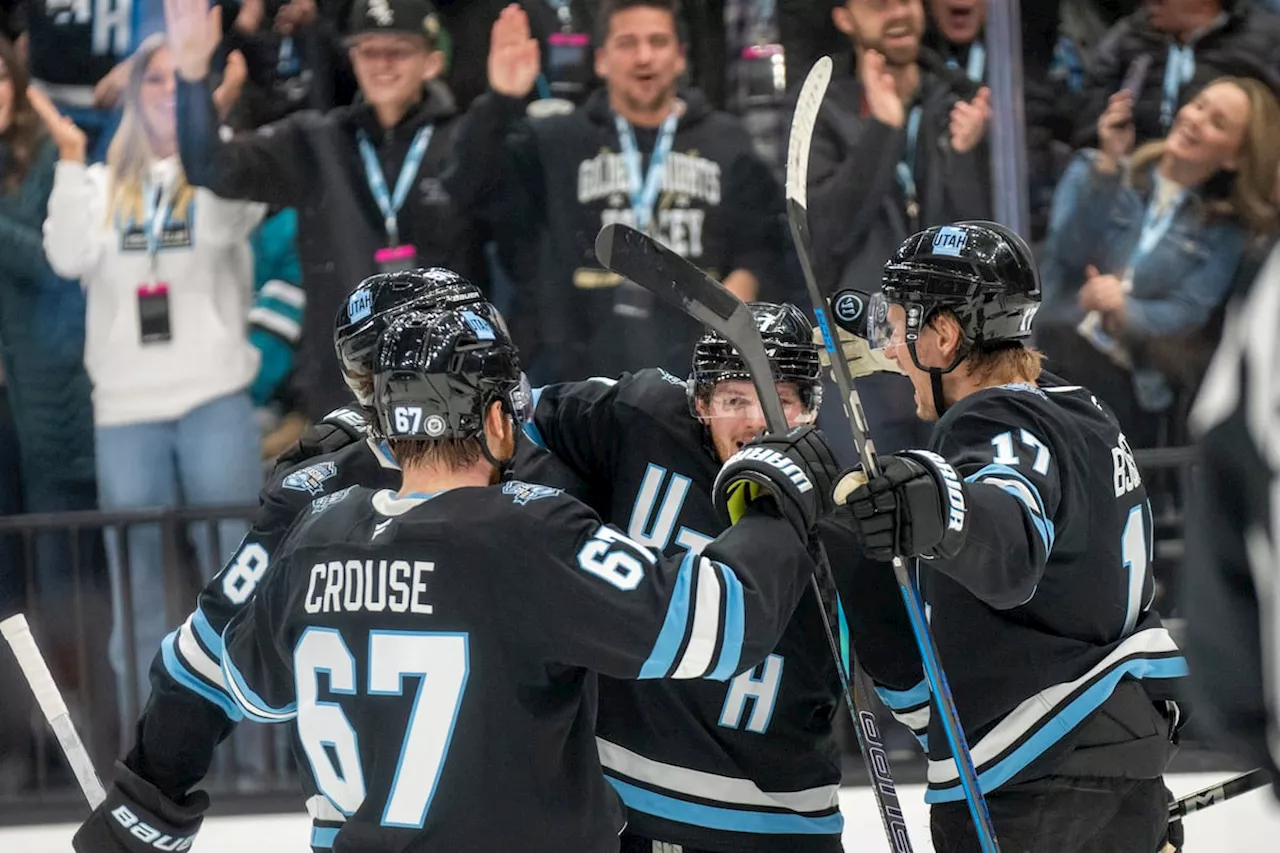The Utah Hockey Club is utilizing cutting-edge sports science techniques to keep its players healthy, fresh, and performing at their best throughout the grueling 82-game NHL season. Director of high performance Devan McConnell employs a variety of data-driven methods, including GPS tracking, heart rate monitoring, and force plate analysis, to monitor player workload and tailor training schedules. The club also prioritizes individual recovery strategies, recognizing that each player has unique needs and demands outside of the game.
Clayton Keller eats french toast and fruit for breakfast every morning. Ian Cole lifts weights after each game. Mikhail Sergachev wears blue-light glasses before bed. It is all part of a routine that keeps the Utah Hockey Club players healthy and fresh for an 82-game NHL season. Devan McConnell, the team’s director of high performance, is at the forefront of the effort. He uses sports science to maximize the performance of Utah’s skaters.
It is an area of the game that has been further embraced by the NHL in recent years. \At the end of each week, McConnell puts together a formal report that details — from a workload perspective — what the team got done. How much energy was exerted, how much recovery was needed, how much gas the players have left in the tank. From there, he recommends a schedule for the coming week from a “physical readiness perspective,” he said. During practice, players wear a small device — sort of like a GPS monitor, McConnell explained — that tracks the distance they travel, the speed at which they’re skating and how many stops and starts they do. The players also wear heart rate monitors when on the ice; it’s another tool that determines Utah’s workload management. “We use both to better understand the physiology of what’s happening in practice so we can try to make sure we’re doing the right balance of enough work to stay sharp and prepared and enough rest to recover and be fresh,” McConnell said. In the weight room, Utah uses force plates, which are platforms with sensors that measure the exerted force the players use when standing and accelerating. “That allows us to do a whole host of things from monitoring physical development over time — with our younger players who are developing we can make sure that the training we’re applying to them is actually getting them more explosive, faster,” McConnell said. (Bethany Baker | The Salt Lake Tribune) \The force plates also tie into injury prevention. McConnell and his team can look at imbalances between the left and right leg of an athlete when they’re healthy. This indicates the type of rehab the player would need if they got hurt and gives them a base point to work back to in recovery. McConnell uses all of this data to craft the most effective practice schedules for Utah on a weekly basis — what days they should practice, for how long and how intense or do they need an off day? There have been times this season when Utah has two days between games and will use both of them as off days. Other times, they’ll have back-to-back practices. It is never a random decision, though. “There’s times where we stick right to that plan,” McConnell said. “There’s other times where the plan for physiology makes sense but there’s some things tactically that we have to get done so we have to find some time to get on the ice and work on those.” There is a constant flow of communication between McConnell and head coach André Tourigny’s staff. Tourigny — who, like many coaches, was brought up through the old-school system — usually has the first instinct to practice, to try to get better. But, through conversations with the high-performance group, he sees how rest and recovery can lead to better play even if it forfeits a session on the ice. (Francisco Kjolseth | The Salt Lake Tribune) “We’re big on that high-performance stuff. A little improvement can make a huge difference in the results,” Tourigny said. “That’s extremely important. Every advantage you can get … You need to take care of that body; their recovery, performance and their power. All of it. There are times, too, when the data comes second to the human. While these are professional athletes who understand the stakes of their jobs, they have lives outside of hockey. There are new dads, young guys getting adjusted to the league and the mental battle of dealing with the tight NHL schedule. “All the information from sports science can say one thing but the most important thing is conversation with the players and them trusting that we have their best interest at heart,” McConnell said. “That really comes with developing relationships.”Away from the rink, Utah Hockey Club has specific practices that help the players feel their best — both physically and mentally. Keller takes Epsom salt baths; it’s something he’s done his entire career, he said. The Epsom salt helps with muscle pain and inflammation between games. The captain also has a red-light bed in his house.
SPORTS SCIENCE NHL UTAH HOCKEY CLUB PLAYER PERFORMANCE RECOVERY TRAINING TECHNOLOGY HIGH PERFORMANCE
United States Latest News, United States Headlines
Similar News:You can also read news stories similar to this one that we have collected from other news sources.
 Utah Hockey Club Falls to Avalanche in Home SlumpDespite a strong road performance, the Utah Hockey Club continues to struggle at home, losing to the Colorado Avalanche 4-1.
Utah Hockey Club Falls to Avalanche in Home SlumpDespite a strong road performance, the Utah Hockey Club continues to struggle at home, losing to the Colorado Avalanche 4-1.
Read more »
 Utah Hockey Club Sees Rivalry Brewing with Colorado AvalancheThe Utah Hockey Club and the Colorado Avalanche are developing a heated rivalry despite only playing each other three times this season.
Utah Hockey Club Sees Rivalry Brewing with Colorado AvalancheThe Utah Hockey Club and the Colorado Avalanche are developing a heated rivalry despite only playing each other three times this season.
Read more »
 Home Ice Woes Plague Utah Hockey ClubDespite a record-breaking road winning streak, the Utah Hockey Club struggles at home, losing their third straight game at the Delta Center.
Home Ice Woes Plague Utah Hockey ClubDespite a record-breaking road winning streak, the Utah Hockey Club struggles at home, losing their third straight game at the Delta Center.
Read more »
 How Jaxson Stauber is handling ‘the nature of the business’ with Utah Hockey ClubJaxson Stauber was recalled from the AHL in the absence of Connor Ingram.
How Jaxson Stauber is handling ‘the nature of the business’ with Utah Hockey ClubJaxson Stauber was recalled from the AHL in the absence of Connor Ingram.
Read more »
 Utah Hockey Club Struggles to Draw Local FansA recent survey shows that Utahns are not yet invested in their local hockey team, with the majority following the Utah Hockey Club only casually or not at all.
Utah Hockey Club Struggles to Draw Local FansA recent survey shows that Utahns are not yet invested in their local hockey team, with the majority following the Utah Hockey Club only casually or not at all.
Read more »
 Utah Hockey Club Struggles at Home: Is It a Mindset Issue?The Utah Hockey Club is experiencing a puzzling trend: significant losses at home compared to strong performances on the road. Could it be a lack of home ice advantage or an over-excitement factor for the team playing in front of their fans? SLC Puck analyst Austin Facer believes it's a matter of mindset, and head coach Andre Tourigny's experience will be crucial in guiding the team to overcome this challenge.
Utah Hockey Club Struggles at Home: Is It a Mindset Issue?The Utah Hockey Club is experiencing a puzzling trend: significant losses at home compared to strong performances on the road. Could it be a lack of home ice advantage or an over-excitement factor for the team playing in front of their fans? SLC Puck analyst Austin Facer believes it's a matter of mindset, and head coach Andre Tourigny's experience will be crucial in guiding the team to overcome this challenge.
Read more »
